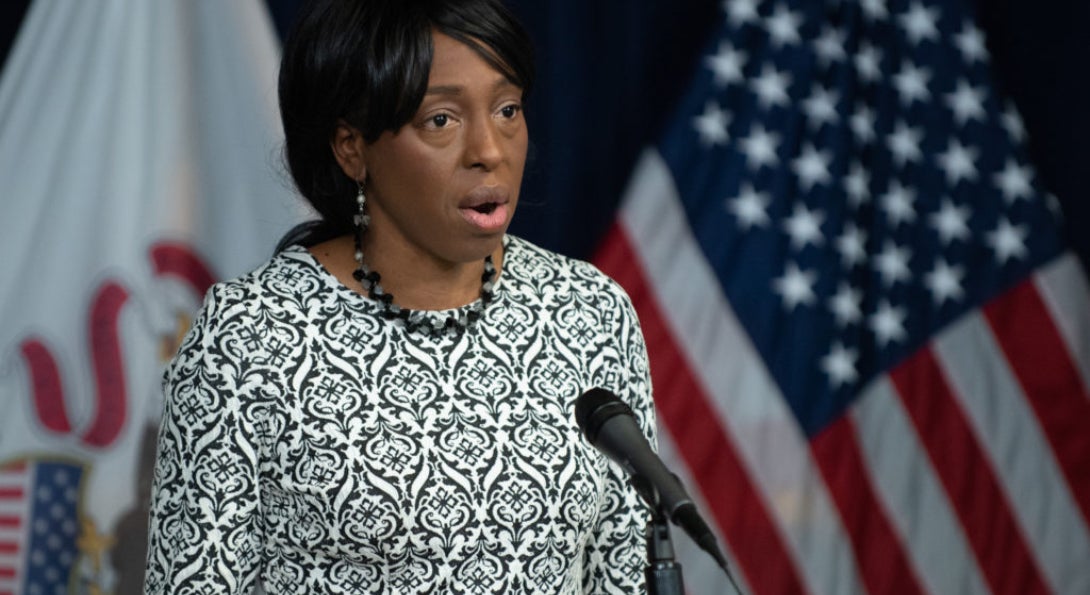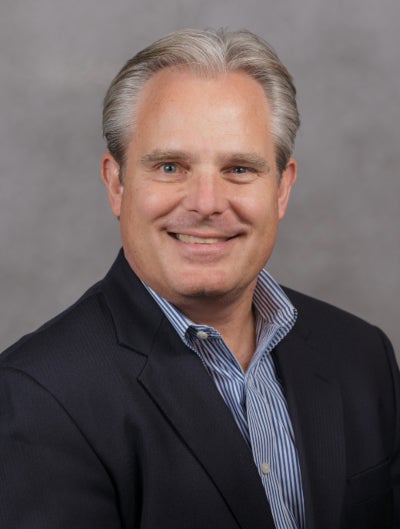Meet the Faculty Assisting Illinois’ COVID-19 Response

Opening story text
Life changed inexorably for Illinois residents on March 21, 2020, when Gov. J.B. Pritzker issued a shelter-in-place order to combat the COVID-19 epidemic. That same day, faculty at the University of Illinois at Chicago (UIC) School of Public Health began working daily with the Illinois Department of Public Health (IDPH) to advise and assist the statewide response.
In areas from command structures to data collection, from congregate settings to worker safety, SPH faculty contributed technical assistance and strategies from their specific areas of expertise to fight a virus that was largely an unknown from the start.
Christina Welter, DrPH ’10, Interim Director of the Doctor of Public Health Leadership program, and Steven Seweryn, EdD, MPH in Epidemiology ‘86, Acting Associate Director of the Doctor of Public Health Leadership program, worked closely with IDPH leadership to revise and expand its incident command system for IDPH 1,100 person staff, statewide partners and the 97 local health departments across the state, a structure of organizing the response in a strategic way prioritizing safety, effectiveness, efficiency and goal orientations and establishing stronger ways to gather and share information with response partners.
This structure helps to organize data systems and gather input and perspectives in ways that might otherwise be missed or ignored, Welter said. This is important in public health so we can focus on equity and justice in our decision making in effective ways.
Opening story text, continued.

Welter and Seweryn began with a SWOT analysis, presented within a 24-hour time frame, which led to the development of organizational teams with set priorities and actions. These teams included an intelligence branch; an operations branch handling alternative care sites, alternative housing sites and long-term care facilities; and a safety committee, among others.
The command structure also focused on developing situational awareness and bidirectional communication among hospitals, local health departments and community partners. On a daily basis, Welter said, this organizing philosophy should answer how do people get information and share to make a decision: what information do they receive, when and why? How can local public health partners get the information and resources they need to operate effectively? How do we In particular, how is information structured for IDPH Director Dr. Ngozi O. Ezike and Gov. Pritzker?
On the data side, Seweryn and Welter led efforts to better align and integrate numerous reporting system data the Department was utilizing for the response. Data are collected through regular disease surveillance, as well as emergency medical services reporting from hospitals on available capacity, among others. They assisted IDPH in planning how data were provided to teams, building uniform ways to analyze data, initiating quality checks and a response system to needs arising from data. Parameters were established for how meetings across IDPH were organized, including a midday huddle for the data team to identify priorities in the current moment.
“It’s a process that helps to perpetuate itself, in terms of how other units operate,” Seweryn said. “We’re seeking to inform the public but also identify data needed for internal situational awareness for decision-making.”
As the pandemic evolves, Welter and Seweryn are modifying the incident command structure along with it. With focus shifting to contact tracing, Welter says building capacity to work with local health departments, mayors, town managers and first responders will be key to guiding local implementation of Illinois’ reopening plans.
Welter and Seweryn are quick to call attention to the “perfect storm” of defunding of public health systems over decades coupled with the largest pandemic in U.S. history. The structure they helped build is no replacement for the sheer manpower of 20-hour days and seven-day workweeks put in by the public health workforce over the past months.
“Our state public health workforce is the backbone of this response,” Welter said. “I couldn’t be prouder of my colleagues right now.”
Navigating workplace safety

In Illinois, thousands of migrant farm workers journey to the state each year to plant seeds, weed fields, detassel corn and harvest produce. They are joined by seasonal farm workers, Illinois residents who shift from agricultural employment in the summer to food service, manufacturing, retail and other sectors during the winter months.
Dr. Linda Forst, senior associate dean, has worked with IDPH’s safety committee to address the unique health needs of these essential workers, along with other workplace safety issues.
“Farmworkers work in tasks and settings where sanitation and social distancing are difficult and where wearing a mask is unprecedented,” Forst said. Farmworkers are generally employed for around 14 weeks and are paid “by the piece” rather than “by the hour.” “The transient nature of this work, the lack of paid sick leave and the drive to make as much money as possible means that workers are unlikely to stay home if they are sick or need quarantine. And there is no place for them to isolate, and no one to bring them food or look after them.”
With Lauren Dana, staff attorney at Legal Aid Chicago, and in partnership with IDPH, IDES, and Illinois Migrant Council, Forst created a guidance document for IDPH use with migrant workers, outlining the symptoms of COVID-19, strategies to avoid infection and connections to Community Health Partnership of Illinois and the Shawnee Health Service for access to free testing and services. Lupita Quintana, PhD in Environmental and Occupational Health Sciences student, provided Spanish translation.
One of the big challenges for farm workers on H2A visas is a requirement the employer provide housing, with State of Illinois oversight. Forst contributed to an IDPH guidance document for safe housing during the pandemic, with strategies that can be used for other housing scenarios for temporary farm workers. The guidelines call for increased sanitation and disinfection following EPA recommendations, provisions for alternate housing, food and supplies for those with symptoms who may need to be quarantined and coordination with IDPH and local healthcare facilities.
Forst notes communication in Spanish, indigenous languages and Creole with individuals who have low literacy and different beliefs requires specialized messaging.
Selected quote
This setup—work in close proximity and inability to quarantine– is the perfect storm for shutting down the agricultural supply chain due to clusters of COVID-19 among farmworkers.
| Senior associate dean
Navigating workplace safety, continued.
In addition, Forst has collaboratively provided guidelines to protect IDPH staff at the frontlines of the scientific investigation of the virus. She helped put into place protocols for entering an IDPH lab and practices for safe work in the facility. To protect lab workers who may need to interact with medical personnel in contact with COVID-19 patients, she connected with UIC’s University Health Service on use of N95 respirators and appropriate fit testing.
“There are time-honored public health approaches to dealing with infectious diseases, but the issue is the logistics of individual work settings,” Forst said. “How do you deal with a bathroom, how do you get in the front door, how do you screen people, what are the consequences of screening people?”
Protecting the most vulnerable

Congregate settings have been hit hardest by the pandemic, with nursing homes in particular experiencing the highest rates of mortality. For those in prisons and facilities for the developmentally disabled and mentally ill, risks for infection remain acute.
Dr. Ron Hershow, professor of epidemiology, is a part of the Congregate Homes Response Team with IDPH charged with advising facilities experiencing outbreaks.
“These outbreaks have been characterized by the things we’ve heard in hospital settings, like shortage of testing, shortages of PPE,” Hershow said. “Despite working under that duress, facilities have shown great resilience in trying to keep ahead of these outbreaks.”
Working with Lauren O’Rear, PhD in Epidemiology student, and Yan Gao, PhD in Biostatistics student, Hershow created a data tracking tool for congregate settings that has been adopted most broadly by facilities caring for people who are developmentally disabled and mentally ill. The spreadsheet creates line listings, or lists of COVID-positive cases tracked by resident, facility, unit, room number, age, risk features, comorbid illnesses and more. Facilities can use the same strategy to track the health of staff interacting with the resident population.
Hershow is also tackling the unknowns of the virus in a different congregate setting – schools. With generally little known about how the virus impacts children and their capacity to transmit the virus, he is working with investigators at Rush University Medical Center to design a study examining how children may contribute to the spread of the virus in households.
“We know that if you vaccinate school-age children, you lessen incidence of flu with entire surrounding communities,” Hershow said. “This sort of study requires us to follow cases back to the household, diagnose a case in a child who isn’t yet hospitalized and then test everyone else in a household. It’s a little labor intensive.”
As the focus of addressing the pandemic shifts to contact tracing, Hershow is connecting with alumnus Philip Ricks, PhD in Epidemiology ’08 and MPH in Epidemiology ‘96, global disease detection analyst at the Centers for Disease Control and Prevention, on a project to develop a curriculum around contact tracing for communities of color.
“Our students are very well-suited to perform contact tracing and even to evaluate the efficacy of tracing, whether the practice is being performed maximally, with maximal benefits,” Hershow said.